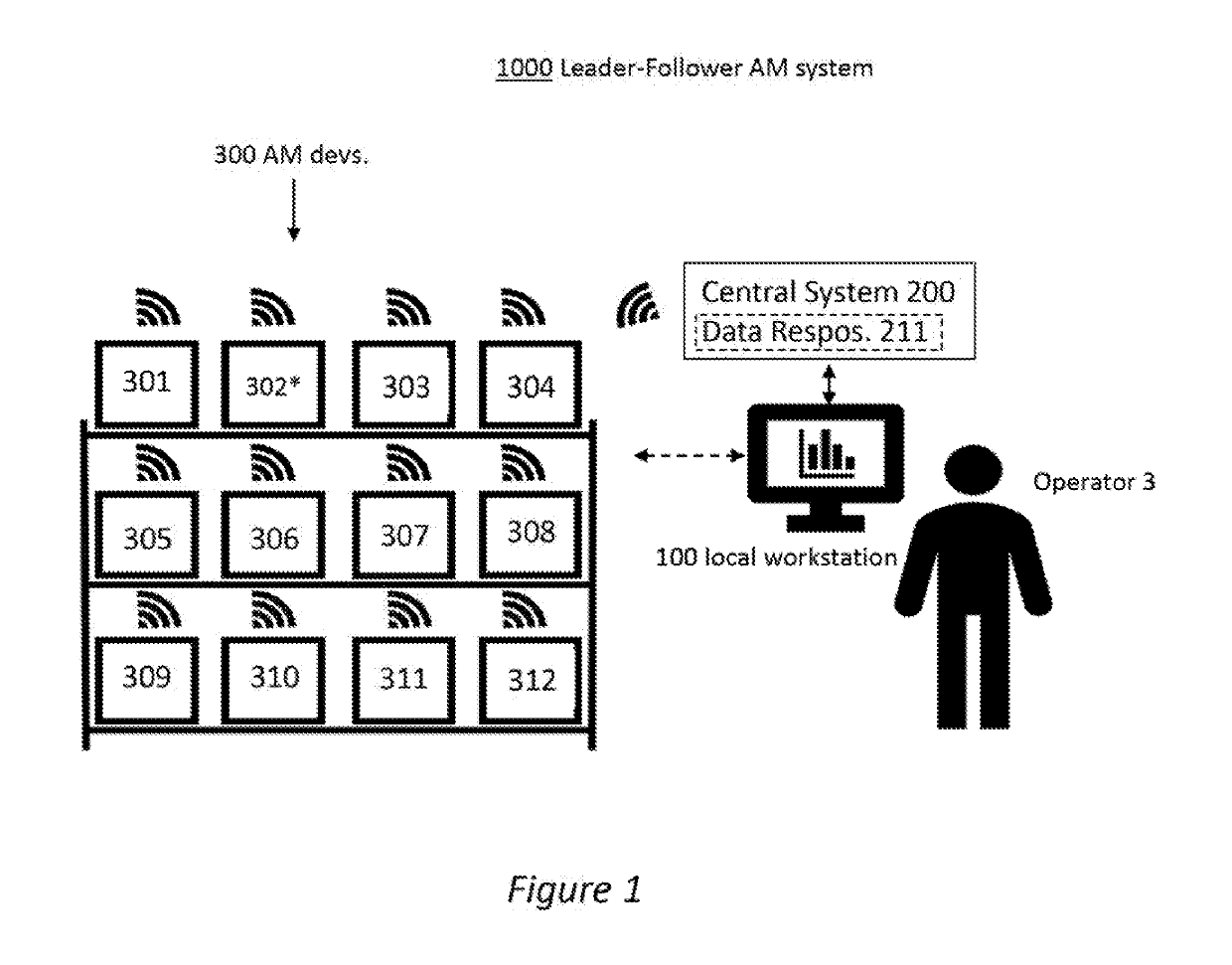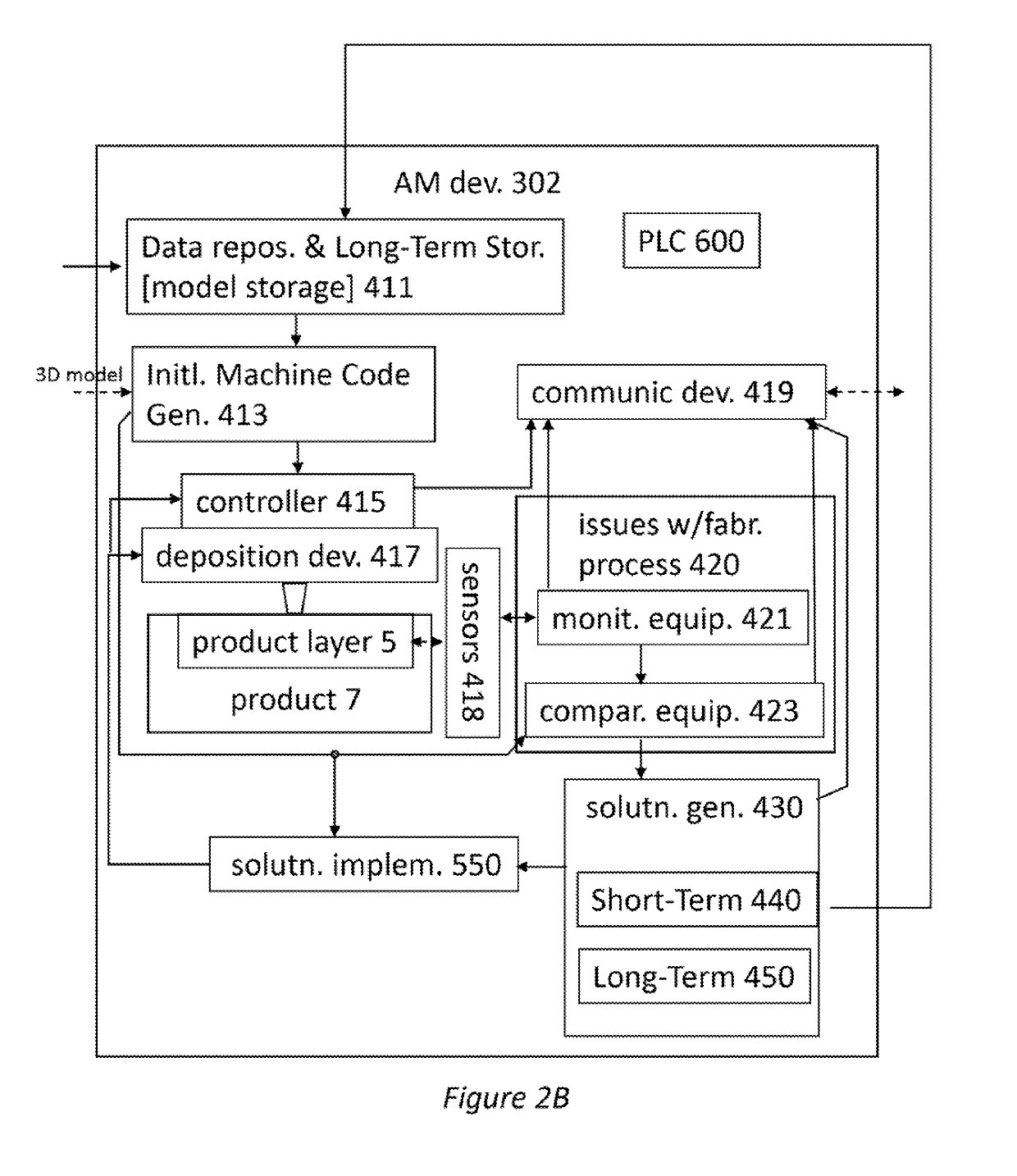Leader-Follower System for Additive Manufacturing
a technology of additive manufacturing and follower system, which is applied in the direction of design optimisation/simulation, error detection/correction, instruments, etc., can solve the problems of am's undesirable issues relative to traditional manufacturing techniques, am's and am's adoptability suffering from an inability to scale am production to mass manufacturing levels
- Summary
- Abstract
- Description
- Claims
- Application Information
AI Technical Summary
Benefits of technology
Problems solved by technology
Method used
Image
Examples
first embodiment
[0081]In a first embodiment, a 3-D model of the product desired to be manufactured is stored in Data Repository and Long-term Storage 411.
[0082]The 3-D model includes all geometric information to manufacture the product using additive manufacturing. It also includes settings, machine, computer configurations and other information required to manufacture a product closely resembling the model.
[0083]This information is provided to the initial machine code generator 413, which positions the model in the proper orientation, and then creates parallel slices from the model which will represent the layers in the additive Manufacturing process.
[0084]The Initial Machine Code Generator 413 then passes the slices to a controller 415.
[0085]Controller 415 is capable of moving and positioning a deposition device 417.
[0086]Deposition device 417 has the ability to build a product layer by layer. A product layer 5 is shown being laid down by deposition device 417. Deposition device 417 may be an ext...
PUM
| Property | Measurement | Unit |
|---|---|---|
| physical attributes | aaaaa | aaaaa |
| threshold | aaaaa | aaaaa |
| chemical composition | aaaaa | aaaaa |
Abstract
Description
Claims
Application Information
 Login to View More
Login to View More - Generate Ideas
- Intellectual Property
- Life Sciences
- Materials
- Tech Scout
- Unparalleled Data Quality
- Higher Quality Content
- 60% Fewer Hallucinations
Browse by: Latest US Patents, China's latest patents, Technical Efficacy Thesaurus, Application Domain, Technology Topic, Popular Technical Reports.
© 2025 PatSnap. All rights reserved.Legal|Privacy policy|Modern Slavery Act Transparency Statement|Sitemap|About US| Contact US: help@patsnap.com



